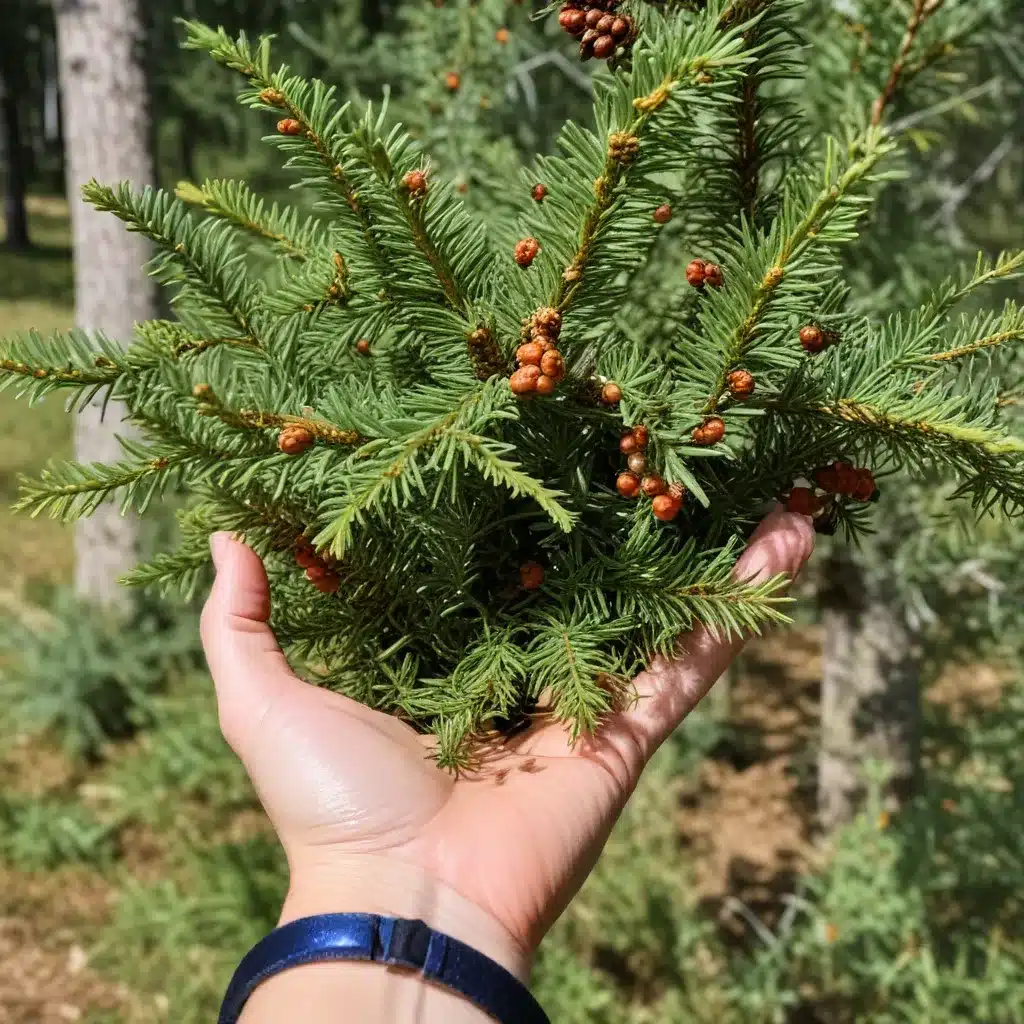
Nurturing Nature’s Gifts: Foraging for Wild Edibles on the Crooked Pines Farm
The Crooked Pines Farm is a vibrant oasis teeming with diverse native flora and fauna. As a farm educator, I’m endlessly fascinated by the abundance of wild edibles that can be responsibly foraged right here on our rural acreage. From nutrient-dense greens to versatile herbs and delectable berries, the land offers a veritable smorgasbord of seasonal delights for the curious forager.
Crooked Pines Farm Ecosystem
Our sprawling property is home to a rich tapestry of native plants, each contributing to the delicate balance of this thriving ecosystem. Towering oak trees cast dappled shade over carpets of violets and clover, while sunny meadows burst with goldenrod, milkweed, and a rainbow of wildflowers. Tucked along the banks of the winding creek, you’ll find beds of tender watercress and plump blackberries tangling through the underbrush.
The availability of these wild edibles ebbs and flows with the seasons. In early spring, we eagerly await the first tender shoots of ramps, fiddlehead ferns, and dandelion greens. As summer arrives, the forest floor transforms into a veritable salad bar, with purslane, lamb’s quarters, and chickweed carpeting the ground. And in autumn, the hawthorn trees beckon with their ruby-red haws, while wild grapes and persimmons ripen to perfection.
To ensure the long-term health of our ecosystems, we practice sustainable harvesting techniques. We never over-forage a single area, always leaving ample plants to regenerate. Additionally, we take care to harvest selectively, prioritizing plants with robust populations and avoiding those that are rare or endangered.
Nature’s Bounty
Identifying Edible Plants
Venturing out onto the farm, you’ll quickly realize that not every plant is fit for consumption. That’s why it’s crucial to have a keen eye and a foraging field guide on hand. We recommend resources like “Edible Wild Plants” by John Kallas or “Identifying and Harvesting Edible and Medicinal Plants” by “Wildman” Steve Brill.
These guides can help you recognize the distinctive features of edible plants, from leaf shape and flower color to growth habit and phenology (the study of seasonal plant changes). With practice, you’ll become adept at spotting the telltale signs of chickweed (small, white flowers; rounded, hairy leaves) or the unmistakable dandelion (bright yellow blooms; jagged, lobed foliage).
Nutritional Value of Wild Edibles
The beauty of wild edibles lies not only in their unique flavors but also in their exceptional nutritional profiles. Many of these plants are veritable powerhouses of vitamins, minerals, antioxidants, and phytochemicals. For instance, purslane is an excellent source of omega-3 fatty acids, while ramps boast impressive concentrations of allicin, the same compound that gives garlic its health benefits.
By incorporating these nutrient-dense wild greens into our diets, we not only expand our culinary horizons but also nourish our bodies with a wealth of natural goodness. Whether sautéed, juiced, or added to salads, these foraged finds are a surefire way to elevate the nutritional value of our meals.
Responsible Foraging Practices
Environmental Stewardship
As we navigate the bountiful landscapes of the Crooked Pines Farm, it’s crucial that we do so with reverence and care. Our role as stewards of this land extends beyond simply harvesting its bounty; it’s our responsibility to ensure that these precious ecosystems remain vibrant and thriving for generations to come.
That’s why we’re dedicated to preserving natural habitats, leaving no trace of our foraging endeavors. We tread lightly, avoiding trampling delicate undergrowth, and always replant any displaced plants. Furthermore, we’re vigilant about removing any invasive species that may threaten the delicate balance of our native flora.
Ethical Harvesting
Foraging is a privilege, not a right. We respect the boundaries of our own property, as well as those of our neighbors. Before venturing beyond the Crooked Pines Farm, we always seek permission from landowners, ensuring that our foraging activities align with local regulations and do not infringe on private land.
When it comes to harvesting, we exercise great care and restraint. We never take more than we need, leaving ample portions for wildlife and future foragers. And we’re mindful to harvest responsibly, using clean tools and avoiding any damage to the plant’s root systems or future growth.
Culinary Exploration
Recipe Development
With such a bounty of wild edibles at our fingertips, the culinary possibilities are endless. In the Crooked Pines Farm kitchen, we delight in crafting recipes that showcase the unique flavors and textures of our foraged finds. From delicate watercress salads to hearty ramp and potato gratins, each dish is a celebration of the land’s generosity.
We also love to get creative with preserving our wild harvests, whether through pickling, drying, or even fermenting. This allows us to enjoy the bounty of the seasons long after the last hawthorn has fallen.
Sharing the Abundance
At the Crooked Pines Farm, we believe in the power of community and the joys of sharing. That’s why we’re excited to host regular foraging workshops and nature walks, inviting both young and old to discover the wonders of our wild edibles. By sharing our knowledge and enthusiasm, we hope to inspire others to reconnect with the land and develop a deep appreciation for the natural world.
So, the next time you find yourself strolling the trails of the Crooked Pines Farm, keep your eyes peeled and your senses heightened. You never know what delectable delights might be waiting to be discovered – nature’s gifts are there for the taking, if only we have the courage to forage for them.


